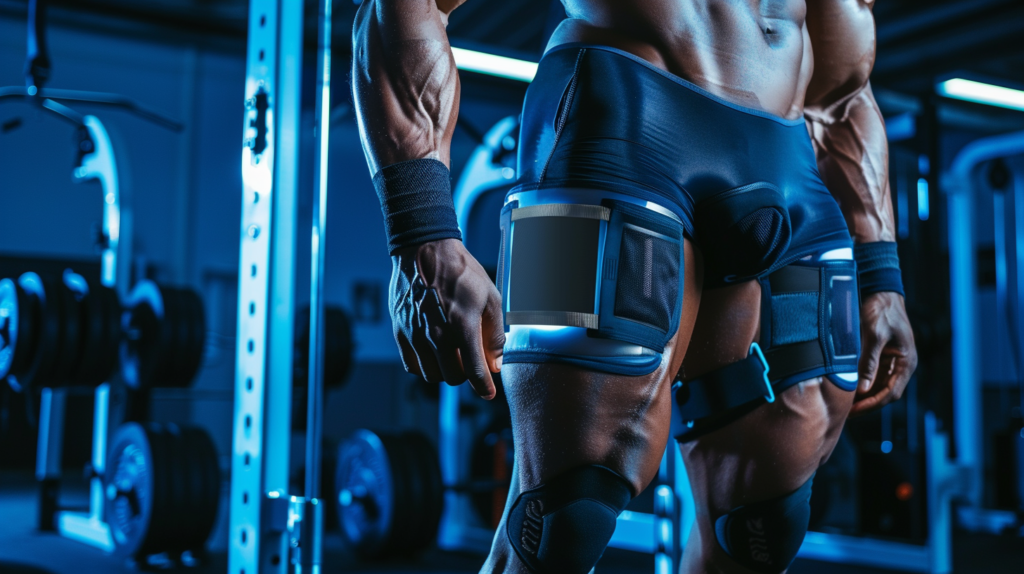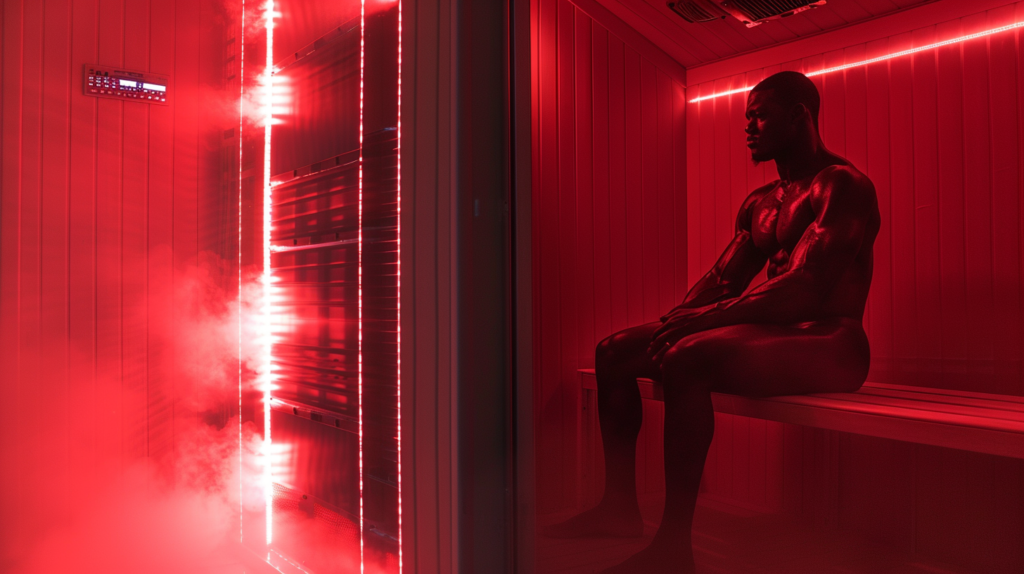To optimize muscle recovery in 2024, bodybuilders can benefit from cryotherapy, compression therapy, and active recovery techniques, which reduce inflammation and enhance healing. Strategic nutrient timing with pre- and post-workout nutrition supports energy levels and muscle repair. Sleep quality and consistency boost muscle repair and growth hormone release, vital for recovery. Mind-body practices like meditation and yoga reduce stress levels and improve mental clarity, aiding in overall recovery. These methods combine to create a comprehensive approach to muscle recovery for bodybuilders in 2024.
Key Takeaways
- Cryotherapy for inflammation reduction and faster healing.
- Compression therapy for enhanced recovery and reduced soreness.
- Active recovery techniques for improved blood flow and flexibility.
- Nutrient timing pre- and post-workout for energy and muscle repair.
- Quality sleep and mind-body practices for stress reduction and optimal muscle growth.
Cryotherapy

When implementing a muscle recovery regimen, cryotherapy offers bodybuilders a scientifically-backed method to reduce inflammation and accelerate healing.
Cold exposure through cryotherapy has been shown to have a positive impact on muscle repair post-exercise. By subjecting the body to extremely cold temperatures for a short period, cryotherapy can help decrease muscle soreness and swelling, allowing athletes to recover faster and get back to their training routine sooner.
Studies have demonstrated that cold therapy can help constrict blood vessels, which reduces swelling and inflammation in the muscles. This constriction also helps to flush out waste products and toxins that may have built up during intense workouts, aiding in the recovery process.
Additionally, the cold exposure triggers the release of endorphins, which are natural painkillers, further alleviating any discomfort associated with muscle fatigue.
Incorporating cryotherapy into a muscle recovery plan can be a practical and effective way for bodybuilders to support their training efforts and enhance overall performance.
Compression Therapy

Utilizing compression therapy can be a beneficial method for bodybuilders seeking to enhance muscle recovery and reduce post-exercise soreness. Compression garments, such as sleeves, socks, or leggings, apply pressure to the muscles, promoting blood flow and reducing swelling. This increased circulation helps deliver oxygen and nutrients to the muscles while removing waste products, aiding in faster recovery.
Studies have shown that wearing compression garments during and after exercise can significantly decrease muscle soreness and reduce recovery time. The pressure applied by these garments can help prevent muscle damage, decrease inflammation, and improve overall muscle function post-workout.
By wearing compression gear, bodybuilders may experience less fatigue and muscle soreness, allowing them to return to training more quickly with improved performance.
Incorporating compression therapy into a muscle recovery routine can be a practical and evidence-based approach for bodybuilders looking to optimize their training results. By leveraging the recovery benefits of compression garments, individuals can potentially expedite their muscle recovery process and enhance their overall performance.
Active Recovery Techniques

To further enhance muscle recovery beyond compression therapy, bodybuilders can explore the benefits of incorporating active recovery techniques into their post-exercise routine. Active recovery involves low-intensity activities that promote blood flow, decrease muscle stiffness, and aid in the removal of metabolic waste products.
Two effective active recovery techniques that bodybuilders can utilize are foam rolling and stretching. Foam rolling, also known as self-myofascial release, involves using a foam roller to apply pressure to specific muscle groups. This technique can help reduce muscle soreness, improve flexibility, and increase blood circulation to the targeted areas. Incorporating foam rolling into a post-workout routine can assist in preventing muscle imbalances and enhancing overall performance.
Stretching techniques such as static stretching and dynamic stretching can also play a crucial role in muscle recovery. Static stretching involves holding a stretch for a period of time, helping to improve flexibility and reduce muscle tension. On the other hand, dynamic stretching involves moving parts of your body through a full range of motion, preparing muscles for activity and aiding in recovery.
Nutrient Timing Strategies

Implementing strategic nutrient timing strategies can significantly impact muscle recovery and performance for bodybuilders. Pre-workout fueling plays a crucial role in providing the necessary energy for intense training sessions. Consuming a balanced meal or snack containing carbohydrates and protein about 1-2 hours before exercising can enhance performance by fueling muscles and optimizing glycogen stores. This can lead to improved strength, endurance, and overall workout quality.
Post-workout nutrition is equally important for muscle recovery and growth. Consuming a combination of protein and carbohydrates within 30 minutes to an hour after training can help replenish glycogen stores, reduce muscle protein breakdown, and stimulate muscle protein synthesis. This can accelerate recovery, minimize muscle soreness, and support muscle hypertrophy.
Sleep Optimization Methods

Optimizing sleep quality and duration plays a pivotal role in maximizing muscle recovery and overall performance for bodybuilders. Quality sleep enhances muscle repair, growth hormone release, and mental acuity.
Here are three evidence-based strategies to optimize your sleep for better muscle recovery:
- Establish Consistent Bedtime Routines: Creating a consistent pre-sleep routine signals your body that it’s time to wind down, promoting relaxation and better sleep quality. Consider activities like reading, stretching, or meditating to prepare your body for rest.
- Utilize Strategic Nap Strategies: Short naps (20-30 minutes) can help boost alertness and performance without interfering with nighttime sleep. Aim to nap earlier in the day to avoid disruption to your regular sleep schedule.
- Prioritize Sleep Environment: Ensure your sleep environment is conducive to quality rest. Keep your room cool, dark, and quiet, invest in a comfortable mattress and pillows, and limit exposure to screens before bed to promote melatonin production for better sleep quality.
Heat Therapy Innovations

Incorporating innovative heat therapy techniques can significantly enhance muscle recovery and performance for bodybuilders. Two popular methods that have gained traction in recent years are infrared sauna sessions and hot tub therapy.
Infrared saunas use infrared light to heat the body directly, promoting relaxation and increasing blood flow to muscles, which can aid in reducing muscle soreness and improving recovery after intense workouts. The heat generated by the infrared sauna penetrates deeper into tissues compared to traditional saunas, potentially leading to greater benefits for muscle recovery.
Hot tub therapy involves soaking in a hot tub, which can help relax muscles, improve circulation, and reduce inflammation. The buoyancy of the water also reduces the pressure on joints, allowing for gentle stretching and increased mobility without added strain on the muscles.
Both infrared sauna sessions and hot tub therapy can be valuable additions to a bodybuilder’s recovery routine, offering relaxation, improved circulation, and potential relief from muscle soreness.
Recovery Supplements

Exploring the efficacy of various recovery supplements is crucial for bodybuilders looking to enhance their muscle recovery and performance. When it comes to muscle repair and overall recovery, the right supplements can make a significant difference.
Here are three key elements to consider:
- Recovery Shakes: These convenient and easy-to-digest shakes are often packed with essential nutrients like protein, carbohydrates, and amino acids, providing the body with the necessary building blocks for muscle recovery post-workout.
- Amino Acids: Amino acids are the building blocks of proteins and play a vital role in muscle repair. Supplements containing essential amino acids can support muscle recovery and growth, especially after intense training sessions.
- Omega-3 Fatty Acids: Omega-3s are known for their anti-inflammatory properties, which can help reduce muscle soreness and support overall recovery. Including omega-3 supplements in your regimen may aid in faster recovery times and improved performance.
Mind-Body Recovery Practices

Mind-body recovery practices encompass a range of techniques that promote holistic well-being and aid in muscle recovery for bodybuilders. Meditation benefits bodybuilders by reducing stress levels and promoting mental clarity, which can enhance focus during workouts and aid in overall recovery. Studies have shown that regular meditation practice can help reduce inflammation and improve sleep quality, both crucial aspects of muscle repair and growth.
Yoga practices, such as gentle stretching and restorative poses, can also play a significant role in muscle recovery. Yoga helps increase flexibility, improve blood circulation, and reduce muscle soreness, all of which contribute to faster recovery times for bodybuilders. Additionally, yoga has been linked to lower levels of cortisol, the stress hormone that can hinder muscle recovery.
Incorporating meditation and yoga into a bodybuilder’s routine can provide not only physical benefits but also mental and emotional well-being, creating a more balanced approach to muscle recovery and overall health.
Frequently Asked Questions
How Can Bodybuilders Prevent Overtraining Injuries?
To prevent overtraining injuries, we focus on foam rolling and stretching. These methods enhance flexibility, reduce muscle tension, and improve blood flow. By incorporating these practices into our routine, we maintain optimal physical condition and prevent injuries.
Are There Specific Recovery Methods for Older Bodybuilders?
As older bodybuilders, we’ve found that specialized supplements and tailored programs can be game-changers. Making age-related adjustments and personalized routines have helped us recover better, ensuring we stay strong and injury-free.
Can Genetics Influence Muscle Recovery Rates?
Genetics influence muscle recovery rates significantly. Understanding our genetic makeup can help tailor recovery strategies for optimal results. By recognizing individual differences, we can adapt training, nutrition, and rest to enhance muscle repair and growth.
Is There a Maximum Limit for Recovery Effectiveness?
There are recovery limits, but effectiveness varies. Prevent overtraining to avoid injuries. Balancing intensity and rest optimally boosts recovery. Personalized approaches, like nutrition and sleep, influence recovery success. Consistency is key.
What Role Does Hydration Play in Muscle Recovery?
Hydration is crucial for muscle recovery. Maintaining proper electrolyte balance enhances performance, while dehydration can hinder it. Protein consumption aids in reducing inflammation post-workout, supporting muscle repair. Remember, staying hydrated is key for optimal recovery.
Conclusion
In conclusion, staying on top of the latest muscle recovery methods is crucial for bodybuilders looking to maximize their gains.
By incorporating practices like cryotherapy, compression therapy, and nutrient timing strategies, athletes can speed up their recovery time and get back to training sooner.
Remember, in the world of bodybuilding, time is muscle.
So, don’t hesitate to try out these innovative techniques to keep your body performing at its peak potential.













